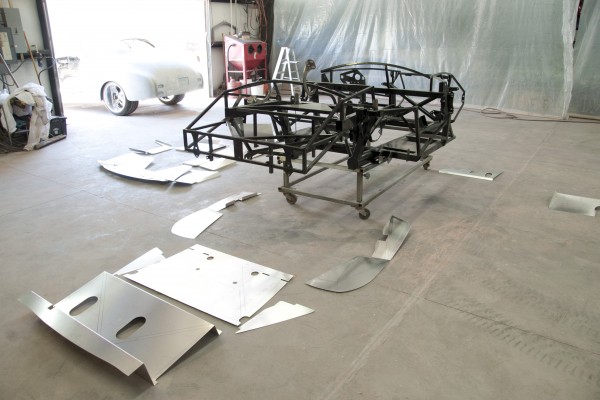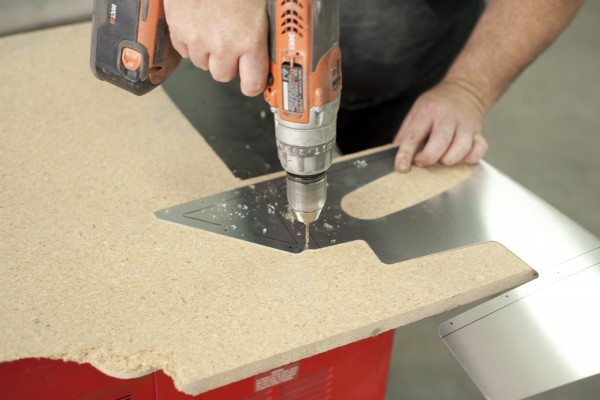Some say a project car is never done, since you can always add something else to enhance its style or performance. But in the case of our Summit Racing/Factory Five Mk4 roadster project, we have arrived at the endpoint and are ready to hit the street.
Like most things, the devil is in the details. In this final installment, we’ll be addressing items such as the aluminum panels, dashboard, wiring, pedal assembly, and seats. These items were installed during various phases of the project, but you’ll get a good idea as to how everything goes together.
Aluminum Paneling
We’ll first focus on the tubular steel subframe that supports the interior aluminum paneling. Derived from Factory Five’s NASA racing series experience, this cage surrounds the Mk4‘s cockpit and foot box areas, and is much safer and stronger than a fiberglass tub bolted onto a ladder frame. The cage consists of welded-steel, side-impact bars, door steel, a foot box frame, and a cockpit dash hoop. Designed into this structure are both front and rear energy-absorbing crumple zones that help protect the driver and passenger.
The Mk4’s aluminum panels are riveted and bonded to this tubular subframe, lining the entire cockpit, trunk, and engine bay. Instead of trimming and fitting the panels by hand, Factory Five uses precise CAD/CAM technology to laser-cut panels out of 6061-T6 aluminum. This material is used instead of conventional, easy-to-form 4000 series aluminum because heat-treated 6061-T6 has greater tensile strength. Factory Five figured out how to correctly form this material for increased strength and rigidity, with no weight penalty.
Interior
Steel sheetmetal sits underneath the British-style bucket seats. This allows you to securely mount the seats directly to the chassis in whichever location is ideal for driver ergonomics. The pedal positions can be adjusted for driver comfort as well. Five-point Simpson Racing H-style safety harnesses are supplied for both driver and passenger.
The aluminum dash panel has a padded cover, toggle switches and indicator lights, which creates a vintage 1960s look. Modern or vintage gauges can be fitted in the pre-drilled mounting holes; a blank dash without holes is also available for custom setups. The steering wheel has a period-style wood rim with an aluminum boss and center section. Original-spec door latches, hinges, and leather check straps are included as well.
Other Bits
The wheels have a period-perfect look thanks to the knock-off spinners, but are much safer—they bolt on instead of relying on a true knockoff. The wheels are also slightly larger in diameter (17 inches versus 15 inches on the original Cobra) to make room for bigger brakes and fit modern tire sizes.
Even though a Mk4 has a pretty basic electrical system, space does not permit covering the complete wiring harness. Suffice it to say the Ron Francis wiring looms for the gauges and main electrical system are clearly labeled and basically a plug-in deal. Just make sure the harness is properly grounded and routed away from heat sources and areas where the wires can chafe.
Zoom!
Sounds like everything is installed and ready to go, eh? Sure is—after you make a thorough safety check (brake function, steering operation, etc.), and look for and fix any leaks. Once you’re sure everything’s sorted out, head for your favorite road or track and have some fun—and enjoy the pride of knowing you built this hot rod!
More Factory Five/Summit Racing Mk4 Stories:
Factory Five Racing Kit Components
Summit Racing/Factory Five Mk4 Kits
Mk4 Build (Part 1): Front Suspension and Steering
Mk4 Build (Part 2): Rear Suspension
Mk4 Build (Part 3): Engine and Drivetrain
Mk4 Build (Part 4): Body Prep and Fitting Trim


























What size tires did you use?